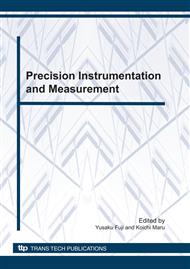p.387
p.395
p.405
p.413
p.422
p.430
p.436
p.442
p.451
Statistical Analysis and Psychological Evaluation of Surfaces under Various Illuminations
Abstract:
Perceptions of image surface are very challenging work for computer vision. Human can amazingly expert at recognizing the reflective properties of surfaces of various materials which a robot can not do easily so far. Smoothly we can differentiate a shiny metallic sphere from the plastic sphere of similar dimensions and structure. In this paper, various image surfaces are analyzed according to various image statistics for robot vision systems. Identification of synonymous objects under various real-world illumination or other environments are very daunting task. However, this is very challenging and crucial for machine vision systems. Both statistical analyses and human evaluation by various subjects under rigorous illumination conditions, we find significant improvement in our analysis and emphasis the importance of statistical evaluation of surfaces for computer vision. Our findings clearly demonstrate that skewness has direct resemblance with the surface glossiness-level. Intensity histogram also shows crucial clue for surface analysis.
Info:
Periodical:
Pages:
422-429
Citation:
Online since:
October 2010
Authors:
Keywords:
Price:
Сopyright:
© 2010 Trans Tech Publications Ltd. All Rights Reserved
Share:
Citation:


